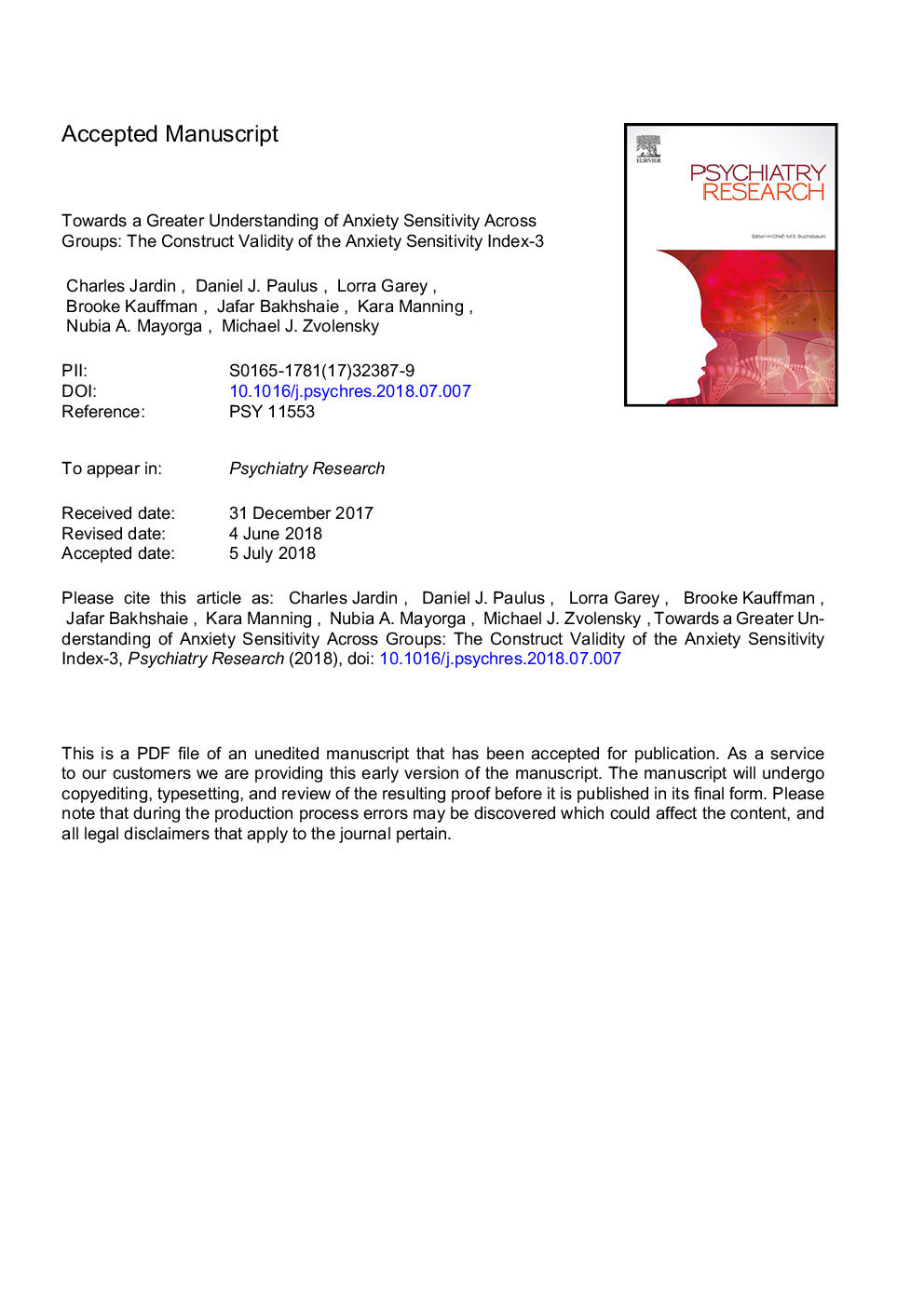| Article ID | Journal | Published Year | Pages | File Type |
|---|---|---|---|---|
| 6811121 | Psychiatry Research | 2018 | 37 Pages |
Abstract
The present study examined the factor structure, invariance properties, reliability, and validity of the Anxiety Sensitivity Index-3 (ASI-3, Taylor et al., 2007). Participants were recruited from a large, ethnically diverse southwestern university (nâ¯=â¯3651; 77.8% female; Mageâ¯=â¯22.06 years; 28% non-Hispanic White). Findings supported a bifactor structure for the ASI-3, which demonstrated measurement invariance across sex, race/ethnicity, age, and sexual minority status. Furthermore, the ASI-3 demonstrated strong reliability and validity, with the anxiety sensitivity general and specific factors (physical, cognitive, and social concerns) evidencing unique patterns of relations with symptoms of depression, suicidality, anxious arousal, and social anxiety. Clinically, these findings generally support the validity of the ASI-3 in measuring anxiety sensitivity across sex, age, race/ethnicity, and sexual minority status. Future work is needed to better understand the role anxiety sensitivity plays within specific demographic subgroups, particularly African-Americans, Asian Americans, and sexual minorities.
Related Topics
Life Sciences
Neuroscience
Biological Psychiatry
Authors
Charles Jardin, Daniel J. Paulus, Lorra Garey, Brooke Kauffman, Jafar Bakhshaie, Kara Manning, Nubia A. Mayorga, Michael J. Zvolensky,
